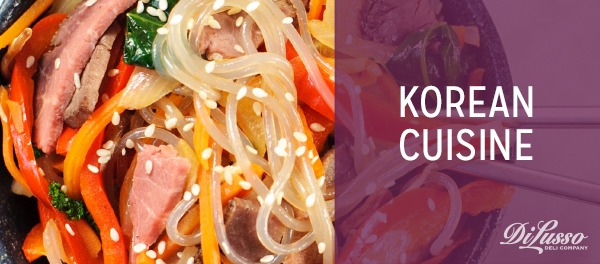
All it takes is one smell, one taste, one ingredient to transport you somewhere miles away. Sometimes it’s a place you’ve already explored. Other times it’s a destination that’s still patiently waiting on your bucket list.
With the help of a few recipes inspired by traditional methods, we’re exploring Korea’s unique cuisine. Join us as we eat our way through some of Korea’s favorite dishes.
Kimchi [Kim-chee]
You might have already heard about this fermented vegetable dish. It has become somewhat of an international superstar in the past couple of years thanks to its unique sour-salty-sometimes-spicy taste and nutritional assets.
In ancient times, long before it became popular around the globe, kimchi was an important source of vitamins during the winter months when fresh produce wasn’t readily available. Recipes varied depending on the region, but ginger, garlic, red chili flakes and seafood sauces were widely used as seasonings. The vegetables would ferment for anywhere from 2 days to a week.



We tossed a handful of traditional vegetables - cabbage, radishes, green onions, carrots and cucumber - with a less traditional sweet brine made from fresh ginger, rice wine vinegar and olive oil. Then we placed it on our seasoned roast beef – laden sesame seed sliders. To keep the flavors delicate, we skipped the conventional fermentation step. For bolder flavors, allow the slaw to ferment for 48 hours.
Pajeon [Pad-Jon]
Sometimes referred to as Korean pancakes, pajeon is a dish that’s relatively unknown in the U.S. Legend has it that people, especially those living along Korea’s lush coastlines, associate pajeon with rain because the sound of raindrops hitting the ground is reminiscent of the captivating sound the batter makes as it sizzles in the pan.
And it tastes even better than it sounds. We love how the batter and scallions crisp and brown in the pan to create its uniquely savory flavor. Plus, it’s incredibly easy to make. In 15 minutes you can whip up a few of these for a savory breakfast or brunch. They even work well as an appetizer. Just slice into bite-sized pieces and you’ve got a finger food that’ll surprise and delight guests.



Japchae [Jop-Cheh]
Enjoyed throughout Korea’s largest cities like bustling Seol and Busan as well as its rural plains and mountain regions, japchae is a regular presence at special gatherings (like birthday parties and weddings). It’s a type of stir fry made by sautéing veggies and beef in sesame oil, and tossing with the dish’s signature - and undeniably beautiful - translucent noodles called dangmyeon.



Then we tossed it all with boiled dangmyeon noodles, drizzled it with a sweet and savory stir fry sauce, and topped it all off with toasted sesame seeds. At the grocery store you might see dangmyeon noodles called “sweet potato noodles” or “Korean glass noodles.” Rice or udon noodles make nice substitutes in a pinch.



Hwachae [Haw-cheh]
Thirsty for more? Give this Korean-style fruit punch a try. Simply add mixed fruit to your favorite carbonated beverage like ginger ale or sparkling water. Watermelon, strawberries and kiwi are popular. If you feel like taking it up a notch, top with edible flowers. We’ll be sipping this one well into the summer.
And with that, we’ve still only scratched the surface when it comes to Korean cuisine. From bibimbap to bulgogi, there’s still much to discover. So after you’ve dipped your chopsticks (or fork) into these recipes, keep exploring. You might just stumble upon a new favorite!
